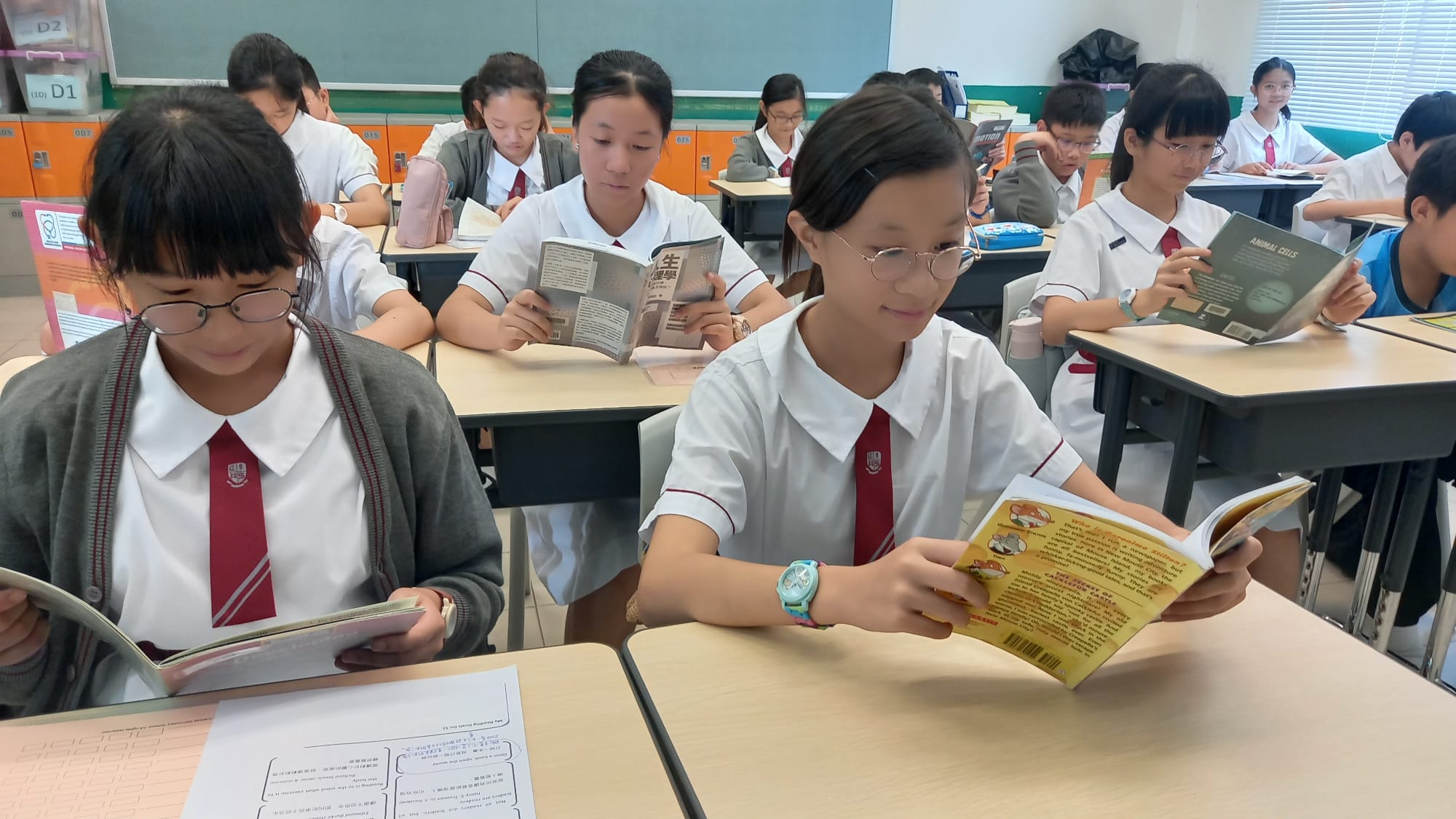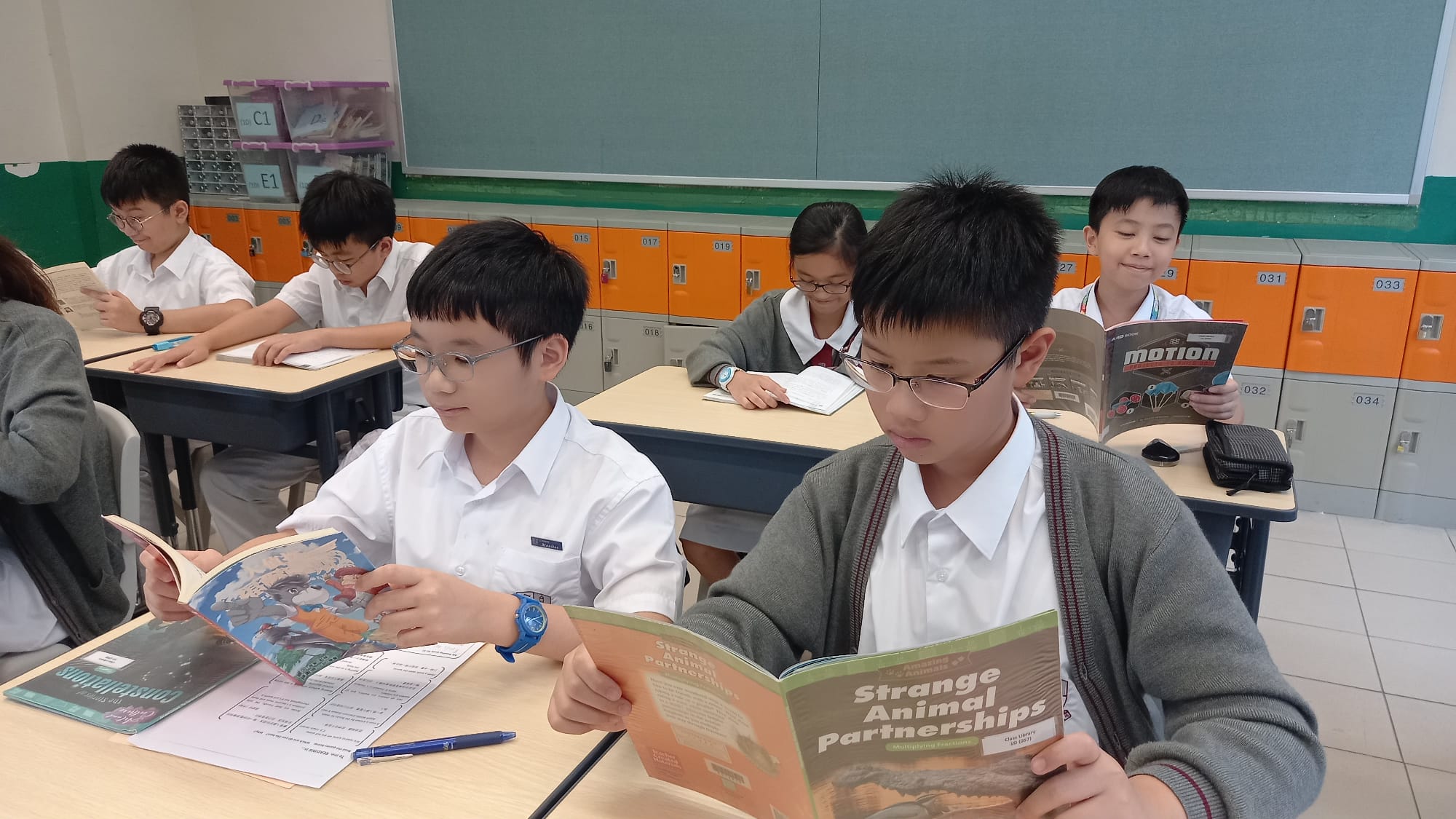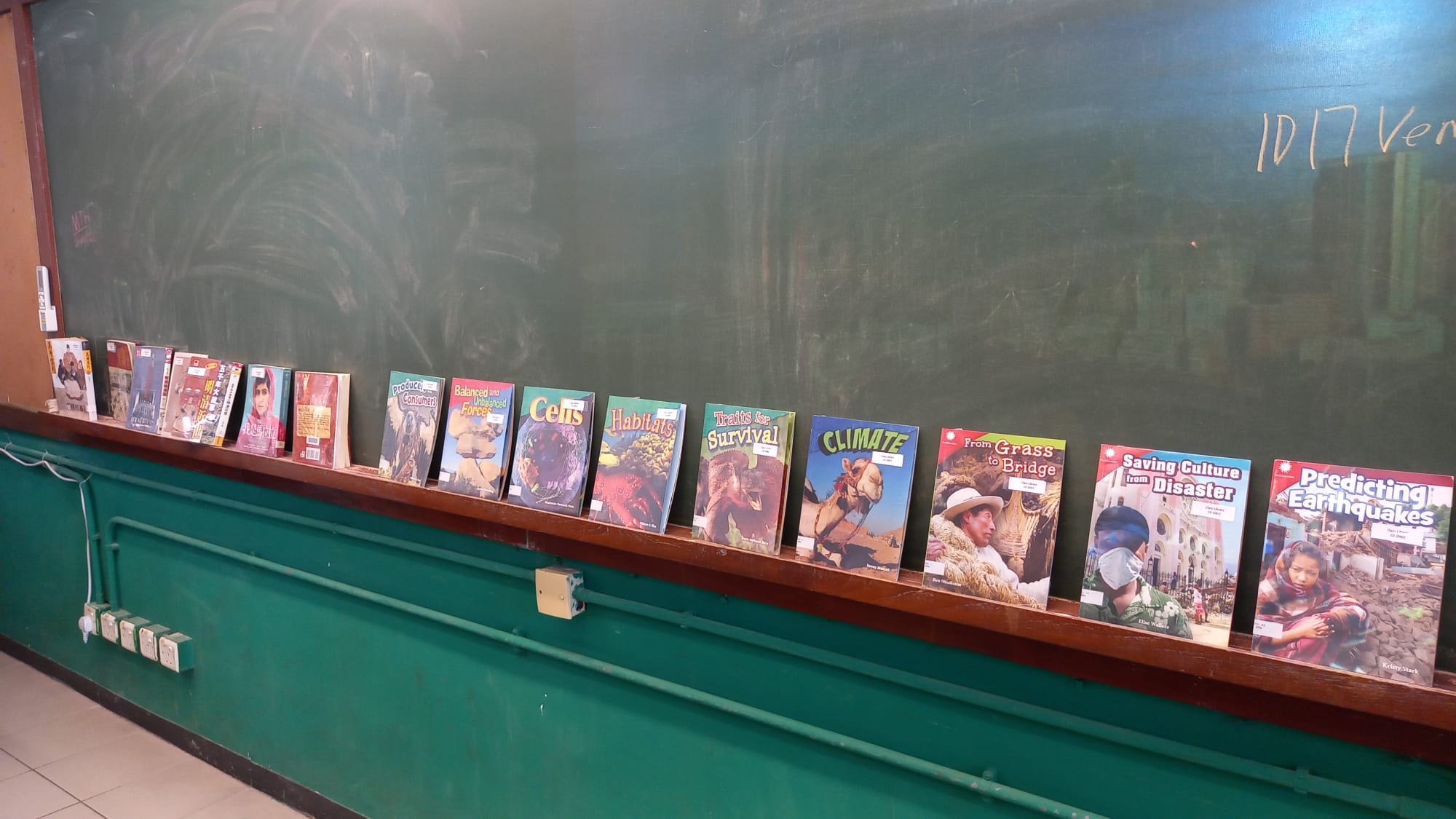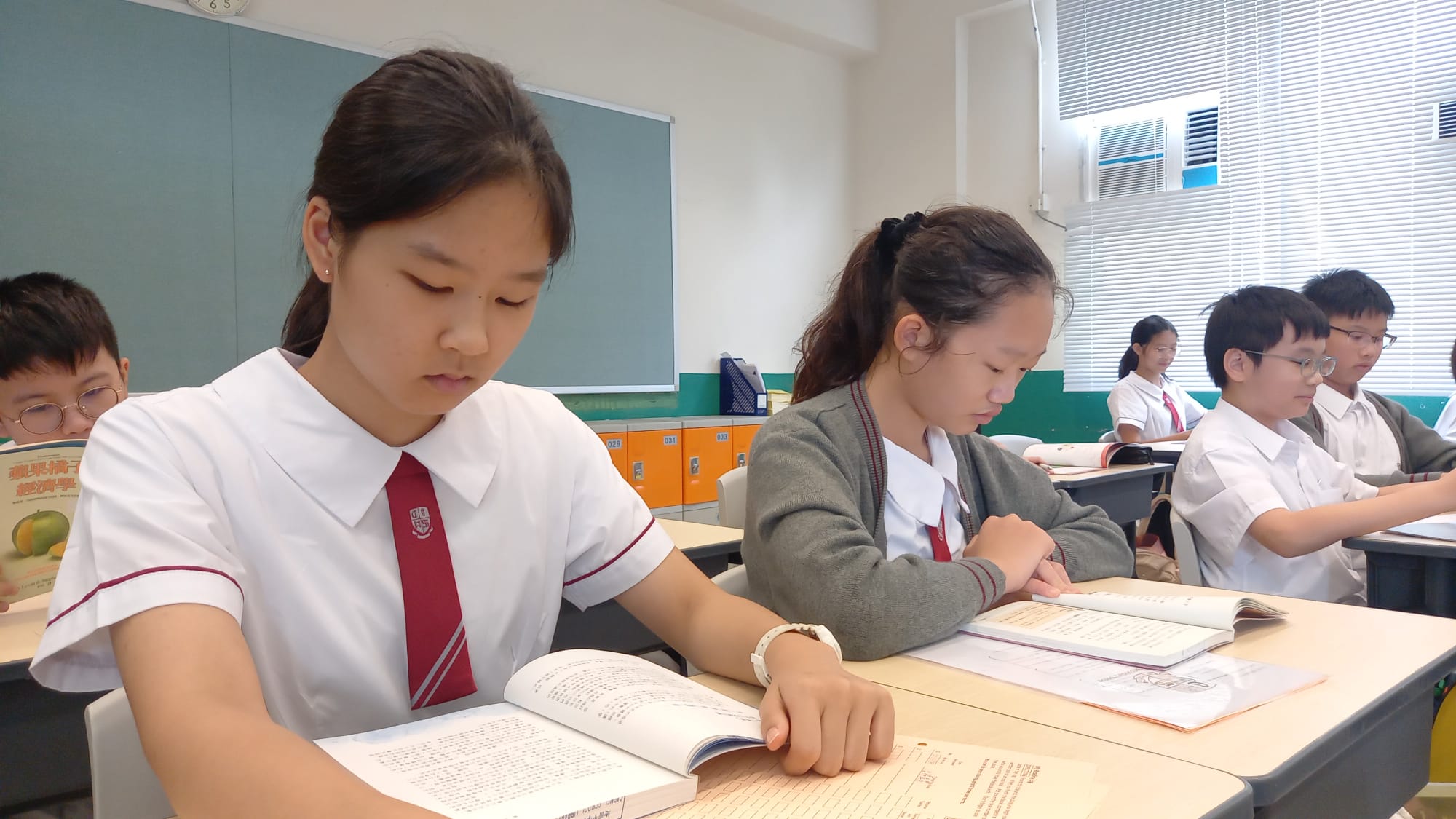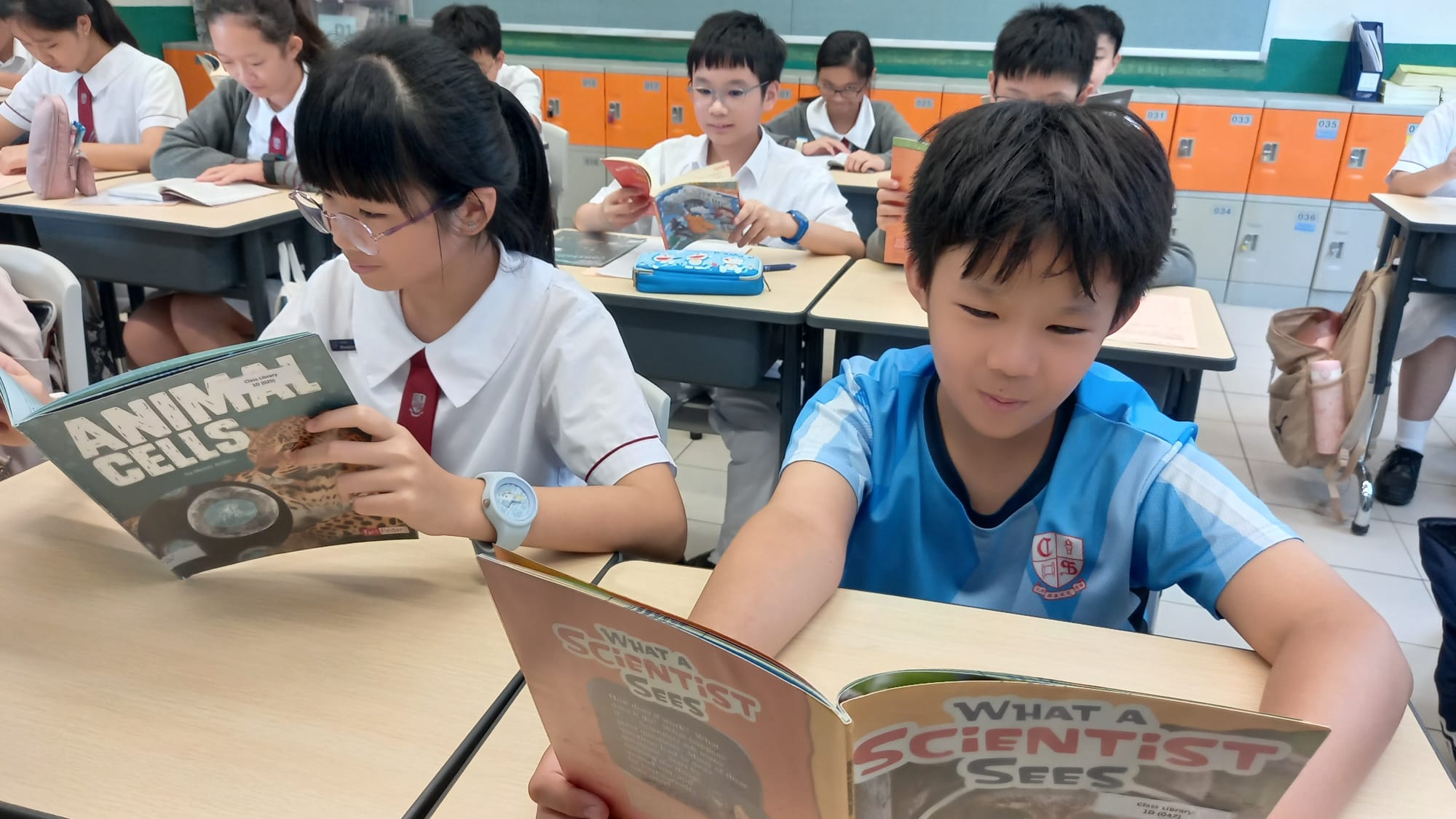Nonfiction Reading Programme S1-S3
Objectives:
1. Enhance Nonfiction Reading Strategies
To equip S1 students with effective nonfiction reading strategies that foster comprehension and critical thinking.
2. Develop Metacognitive Skills
To cultivate metacognitive strategies, including goal setting and self-evaluation. Students will establish yearly goals at the start of the academic year and set short-term goals. They will monitor and assess their reading progress at the conclusion of each phase and at the end of the year.
3. Foster Learner Autonomy Through Choice
To promote learner autonomy by allowing students to choose their reading materials and methods of response. Over 80 nonfiction books in both Chinese and English will be available in the class library, although students are encouraged to explore additional sources. They will have opportunities for oral book sharing with their reading teacher and peers. Students may also opt to complete a written task in response to their reading.
4. Integrative Curriculum for Language Acquisition
To incorporate targeted units and chapters from various subjects to teach and refine diverse reading strategies. This approach enhances students’ language acquisition by immersing them in subject-specific vocabulary and text structures in English.

